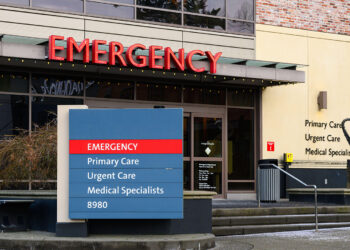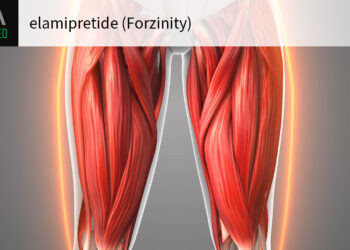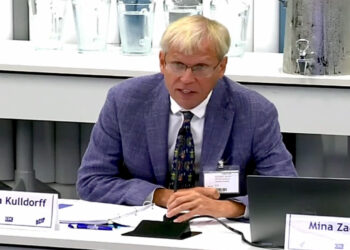Australia has launched a government-funded lung cancer screening program that provides biennial low-dose CT scans to patients who are either current heavy smokers or who have quit in the past decade.
The screening program is a “game-changer” for Australia, Lucy Morgan, MD, PhD, respiratory physician at Concord and Nepean Hospitals in Sydney, told Medscape Medical News. “This [program] gives us the opportunity to offer cure to people who would otherwise develop Australia’s most deadly cancer.” Morgan is also chair of the Lung Foundation Australia and a member of the screening program’s expert advisory committee.
Early Diagnosis Crucial

Lung cancer is the fifth most diagnosed cancer in Australia and the most common cause of cancer death, claiming around 9000 lives per year. Survival rates for lung cancer (around one quarter of those diagnosed survive for 5 years) are far below those of more common cancers, including breast cancer, which has a 5-year survival rate of above 90%, and colorectal cancer, which has a 5-year survival rate of above 70%.
The reason for the low survival rate of lung cancer is that by the time it is symptomatic, it’s often advanced, said Shalini Vinod, MD, radiation oncologist at the University of New South Wales Sydney. “Approximately in half the cases that I pick up, the cancer has spread beyond the lungs and so is incurable,” said Vinod, who is on the expert advisory committee for the program.
Lung cancers that are detected early, before they have spread, have a much better prognosis and better treatment options, Vinod said. The most common approach for early lung cancer is surgery to remove the tumour or radiotherapy. “If they’re 2 centimetres or less, they’re eligible for minimally invasive surgery…where rather than taking a whole lobe of the lung out, you can just take a part of the lobe with equivalent outcomes,” she told Medscape Medical News.
The program, which was launched on July 1, is recruiting smokers aged 50-70 years who currently smoke or have quit in the past 10 years and have a smoking history of at least 30 pack-years.

Only a handful of countries worldwide, including the United States, the United Kingdom, South Korea, Taiwan, and Canada, have national or regional lung cancer screening programs, which all vary slightly in the choice of screening interval, age range, and smoking history. For example, the US Preventive Services Task Force recommends yearly screening.
The choice of 2-yearly screening was an effort to balance cost and benefit, said Henry Marshall, MD, PhD, a thoracic physician at the Prince Charles Hospital and University of Queensland Thoracic Research Centre in Brisbane. “It’s as effective in terms of its health benefit, but of course a lot cheaper because you’re immediately halving the number of scans that you need to do,” said Marshall, who is also a member of the screening program expert advisory committee.
Australia’s Unique Challenges
Australia faces unique challenges in implementing a national screening program like this one. The first is that lung cancer is the most diagnosed cancer and the most common cause of cancer death among Aboriginal and Torres Strait Islander people, with incidence and mortality rates around twice those of non-Aboriginal Australians.
“Some of it is about living in rural and remote Australia, some of it is about smoking rates, some of it is probably about genetic predisposition; we don’t understand that completely,” said Morgan. “And much of it is about access to health care.”
To address this disparity, the program was developed in partnership with the Aboriginal Community Controlled Health Organisation sector and First Nations people to ensure that the design and implementation was community-led and culturally appropriate and that the information and education materials were tailored to the community.
The program includes a mobile CT screening service to reach Australians in rural and remote areas because “there are millions of Australians living more than four hours away from a CT scanner,” said Morgan. Five mobile screening trucks will be deployed around the country beginning in November this year.
Participants must be initially referred for screening by their general practitioner (GP). If anything is detected on CT, they are then referred to another clinician according to a nodule management protocol that was developed specifically for the program.
The Royal Australian College of General Practitioners has expressed concern about the potential increased workload for GPs, particularly those in areas of socioeconomic disadvantage, where greater numbers of patients are likely to have histories of heavy smoking and therefore be eligible for screening.
The program will also lead to increased pressure on radiology and cardiothoracic surgery services in Australia, Vinod said, but another concern is whether smokers will actually sign up for the program. Uptake for breast cancer screening in Australia is around 50%, and uptake for bowel cancer screening is around 40%. “If you just benchmark it against those, this is going to be tough because this is a cancer where there is a lot of stigma,” Vinod said.
Vinod, Morgan, and Marshall are members of the National Lung Cancer Screening Program Expert Advisory Committee. They reported having no relevant financial relationships.
Source link : https://www.medscape.com/viewarticle/australia-launches-lung-cancer-screening-program-smokers-2025a1000i6t?src=rss
Author :
Publish date : 2025-07-09 12:15:00
Copyright for syndicated content belongs to the linked Source.














